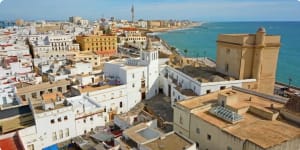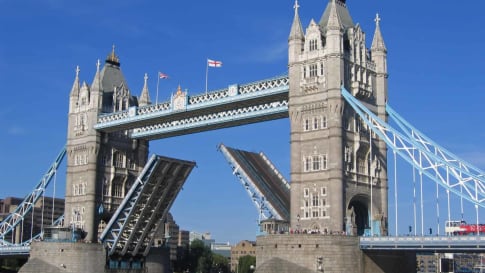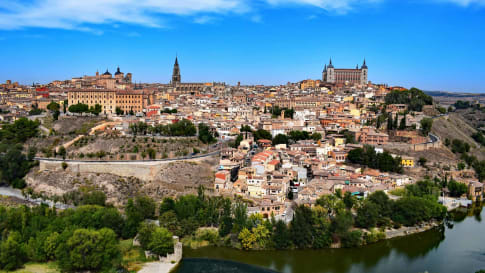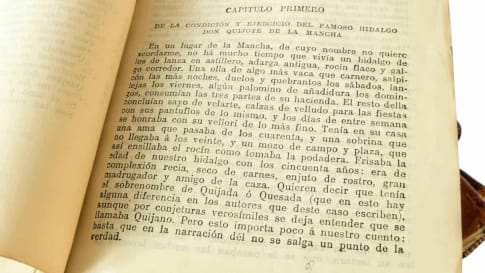Habsburg Spain vs Tudor England: small group tour exploring 16th century history of England & Spain
This holiday with a leading tour operator allows the escorted tour for seniors to explore the life and times of the royal families responsible for making England and Spain so significant in the 16th century with local guides providing the travel experience for the detailed itineraries. We spend 10 days travelling from London to Madrid.
From A$14,995AUD
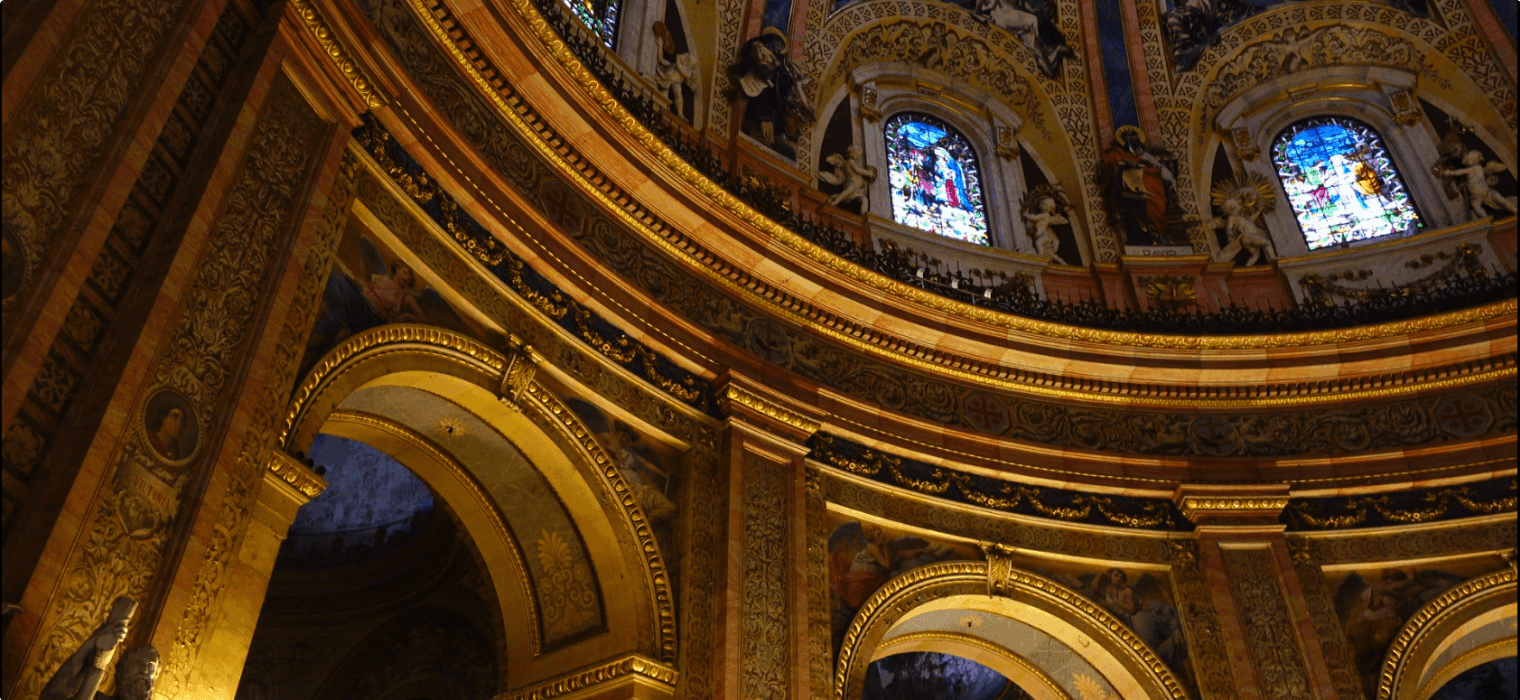
Highlights
- 1. Visit Hever Castle, childhood home of Anne Boleyn
- 2. Explore the famous Alhambra palace and fortress complex in Granada
- 3. Be amazed by the mosque converted into a cathedral in Cordoba
- 4. Spend a morning in the fabulous El Escorial, historical home of the King of Spain
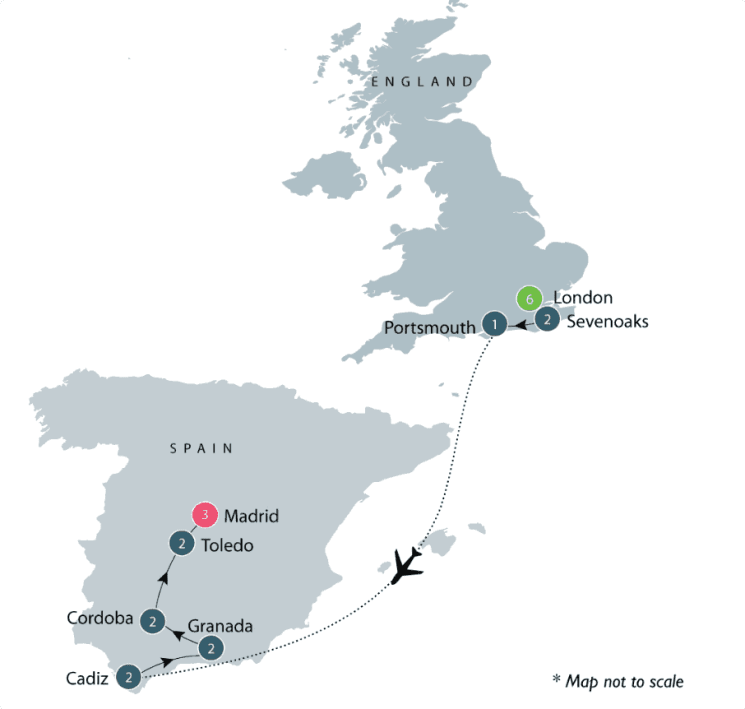
Departure Dates
| Departure Date | Price |
|---|---|
| 18 August 2025 Ends 07 September 2025 • 21 days A$14,995 Twin A$17,295 Single Available | Selected |
| 24 May 2026 Ends 13 June 2026 • 21 days A$15,750 Twin A$18,150 Single Available | |
| 14 September 2026 Ends 04 October 2026 • 21 days A$15,750 Twin A$18,150 Single Available | |
| 23 May 2027 Ends 12 June 2027 • 21 days A$16,250 Twin A$18,650 Single Available | |
| 13 September 2027 Ends 03 October 2027 • 21 days A$16,250 Twin A$18,650 Single Available |
Habsburg Spain & Tudor England Small Group Tour
Odyssey Traveller offers this small group tour exploring the life and times of two royal families: the Habsburgs of Spain and the Tudors of England. Get to know the fascinating personalities who emerged in each nation, as well as the legacy the empires left behind.
Our escorted small group tour is designed for travellers interested in exploring the history of Spain and England during the 16th century. This tour examines the achievements of the Habsburgs and Tudors, and the historical forces that shaped them and which they shaped.
Odyssey Traveller's Habsburg vs Tudor tour exploring the history of 16th century England and Spain departs twice yearly. With our Program Leader and tour guides, we will visit various destinations, walking down beautiful streets, going on a city tour and sightseeing tour to discover heritage sites and to immerse ourselves in the culture.
Habsburg Spain vs Tudor England
Two countries dominated Europe during the 16th century — Spain and its emerging rival, England. The ruling dynasties of both countries, the Habsburgs (also spelled Hapsburgs) and the Tudors, had their roots in the 15th century. In England, Henry VII defeated the last monarch of the House of York in 1485, ushering in the Tudor dynasty. Across the seas, Ferdinand and Isabella combined the kingdoms of Castile and Aragon to create a united Spain. They drove out the Moors, forcibly converted the Jews, and financed the expeditions of Christopher Columbus. Ferdinand's death led to the ascension of the young Charles I to the throne, effectively founding the Spanish monarchy.
The Habsburgs of Spain and the Tudors of England both had their share of larger-than-life characters, many of whom we will come to know on this trip. At the beginning of the 16th century, both families, strong defenders of the Catholic faith, were soon to be connected by marriage. Yet by the time the last Tudor monarch, Elizabeth I, died in 1603, the families and their respective nations had long engaged in a bitter struggle. Divided by religion, divorce, clashing personalities and economic rivalry, their enmity culminated in the defeat of the Spanish Armada by the naval forces of Elizabeth I under her commanders Lord Charles Howard and Sir Francis Drake in 1588.
Our itinerary explores the 16th century history of Habsburg Spain and Tudor England
Our 21-day tour exploring this fascinating period in European history begins in England. We concentrate on the lives and monuments associated with Henry VIII and his long-reigning daughter, Elizabeth I. Henry first married Catherine of Aragon, Isabella and Ferdinand's daughter and the widow of his brother, Arthur. Elizabeth refused the hand of Philip of Spain, Isabella and Ferdinand's great-grandson, and previously the husband of Elizabeth’s sister Mary. It’s a complex family tree! By this time, the fiercely Catholic Spaniards, led by Philip, were keen to re-convert Protestant England. However, Elizabeth was equally determined to retain both her religion and her independence.
From England, we travel on to Spain for the second half of our tour, spending time to see tour highlights in Cadiz, Granada, Cordoba, Toledo and Madrid. We delve into the lives of Ferdinand and Isabella's descendants who had the greatest impact on Spain. We look particularly at Isabella and Ferdinand, Joanna the (possibly) Mad, and her husband Philip the Handsome. Their son, Charles V, was the Holy Roman Emperor and his son, Philip II, was the great-nephew of Catherine of Aragon. This gave him another reason to despise Elizabeth I, daughter of the up-start Anne Boleyn … very complicated! We also trace, through their portraits in the Prado Museum, the decline of the Habsburg line, largely through inbreeding.
For more details, click the ‘Top 5’ or ‘Itinerary’ buttons above! If you’re keen to experience this tour, please call or send an email. Or, to book, simply fill in the form on the right hand side of this page.
If you're interested in something else, small group tour of Habsburgs & Tudors is only one of the many Spain and England tours offered by Odyssey Traveller.
Articles published by Odyssey about Spain and England
The following list of articles published by Odyssey Traveller for senior travellers to maximise their knowledge and enjoyment of Spain & England when visiting;
- 15 of the best places in Spain to visit.
- Travel notes for Barcelona
- Ten of the best books published on Spain
- Ten of the Best art galleries in Europe to visit.
- Discovering Spain (and Portugal )
- Understanding British Churches
- English Village History
- Britain's National Trust.
External articles to assist you on your visit to Spain & England
Gallery
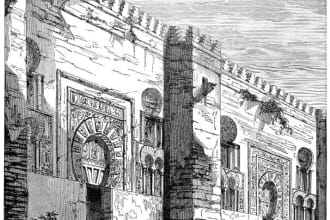
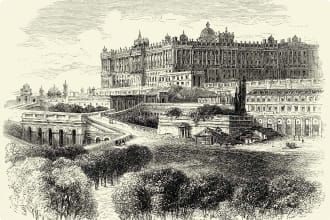
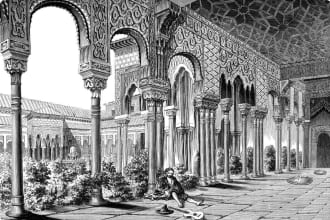
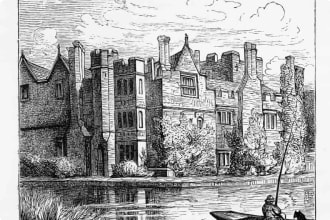
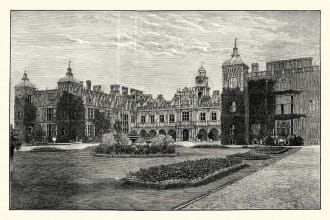
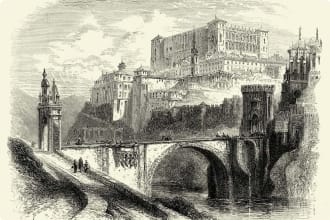
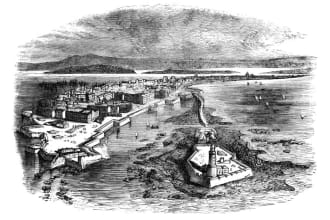
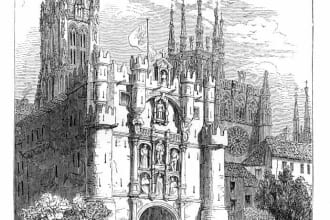
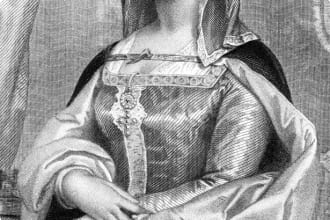
Itinerary
21 days
Day 1: London
Accommodation: Accommodation at London Lodge Hotel or similar.
Arrive in London and meet at our hotel in the afternoon for a tour briefing.
Enjoy a welcome dinner in a local restaurant.
Day 2: London
Accommodation: Accommodation at London Lodge Hotel or similar.
This morning your program leader will take you to visit to the National Portrait Gallery to acquaint you with the Tudor monarchs through their portraits.
In the afternoon a visit to Westminster Abbey, burial site of both Henry VIII and Elizabeth I will be included.
The rest of the day will be free to explore London at your leisure.
Day 3: London
Accommodation: Accommodation at London Lodge Hotel or similar.
This morning a local coach and guide will take us on a half day tour which will include a visit to The Tower of London where Anne Boleyn lost her head.
In the afternoon, a visit to the Museum of London will help us to understand more about life in Tudor England.
Day 4: London
Accommodation: Accommodation at London Lodge Hotel or similar.
This morning travel by coach out of London to visit Hatfield House, where Henry VIII’s children were brought up, and where you can see a fascination collection of portraits of Elizabeth I.
On your return to London you will have the afternoon at leisure before a visit to the Globe Theatre for a performance of a play by William Shakespeare or one of his Tudor contemporaries.
Day 5: London
Accommodation: Accommodation at London Lodge Hotel or similar.
This morning a local coach will take you on a tour of Tudor London. This morning’s excursion will include a guided walking tour covering key points of interest. After the walking tour, we will travel out to Hampton Court Palace, scene of so much Tudor intrigue.
Day 6: London
Accommodation: Accommodation at London Lodge Hotel or similar.
Today’s full day tour will include entrance to Sutton House and to the famous Golden Hind II.
An afternoon cruise on the Themes, as far as Greenwich, past numerous Tudor landmarks, will also be included.
Day 7: Sevenoaks
Accommodation: Accommodation Best Western Donnington Manor House Hotel or similar.
Today we leave London and travel south into Kent for a two-night stop at Sevenoaks.
On the way to Sevenoaks we will stop to visit Eltham Palace, childhood home of Henry VIII. Little of the original palace remains but the magnificent medieval hall is still on display as is the extraordinary art-deco addition added in the 20th century.
In the afternoon, we will visit Knole House, taken over and lived in by Henry VIII, now owned by the National Trust.
Day 8: Sevenoaks
Accommodation: Accommodation Best Western Donnington Manor House Hotel or similar.
Today we visit two wonderful castles with Tudor connections.
Morning visit to Hever Castle… childhood home of Anne Boleyn.
In the afternoon visit Leeds Castle, restored in the 20th century but looking, from the outside, much as it would have done in Tudor times.
Day 9: Portsmouth
Accommodation: Accommodation Holiday Inn Portsmouth or similar.
This morning we transfer to Portsmouth.
In Portsmouth visit the Royal Naval Dockyards Museum to see Henry’s battle ship the Mary Rose sunk in 1545 and recovered in 1982.
Day 10: Cadiz Spain
Accommodation: Accommodation Hotel Monte Puertatierra or similar.
This morning we will transfer by coach to Heathrow for our flight to Spain.
The (included) flight will take us to Gibraltar where we will be met by a local coach for our transfer to Cadiz.
Dinner in our hotel tonight
Day 11: Cadiz
Accommodation: Accommodation Hotel Monte Puertatierra or similar.
Cadiz was the premier naval port for 16th century Spain and was the scene of the famous “singing of the Spanish Beard” by Francis Drake.
This morning we have a tour of the city with a local guide, including a visit to the port and to the St. Francisco Church.
The rest of the day will be free to explore Cadiz.
Day 12: Granada
Accommodation: Accommodation at Palacio De Santa Ines or similar.
This morning we leave Cadiz and transfer to Granada, by coach, for a two-night stay.
Granada was one of the last cities to fall to the Catholic forces of Isabella and Ferdinand and it is where they chose to be buried. Today we will have a guided tour of the city including entrance to the Cathedral where the royal pair were buried.
Dinner in hotel.
Day 13: Granada
Accommodation: Accommodation at Palacio De Santa Ines or similar.
This morning we will continue our exploration of Granada with a visit to the fabulous Alhambra, once a Moorish palace and later home to Catholic monarchs. We will also have entrance to the Generalife gardens.
Day 14: Cordoba
Accommodation: Accommodation at Las Casa De Juderia De Cordoba or similar.
After breakfast, we will transfer by coach to Cordoba where a local guide will take us on a tour of the city. Our tour will include entrance to the splendid Moorish Mosque, later converted to a Baroque cathedral while still maintaining many of its Moorish features.
Dinner will be in our hotel.
Day 15: Cordoba
Accommodation: Accommodation at Las Casa De Juderia De Cordoba or similar.
Today will be a day at leisure. You will have the chance to explore the city, walk right around the walls, do some shopping or just relax.
You might like to find an authentic restaurant and linger over a long Spanish meal.
Day 16: Toledo
Accommodation: Accommodation at Alfonso IV Hotel, or similar.
After breakfast, we will transfer by coach to Toledo, capital of the newly united Spain until 1563.
Here we will be met by a local guide for a tour of the main city sights.
Dinner tonight will be in our hotel.
Day 17: Toledo
Accommodation: Accommodation at Alfonso IV Hotel, or similar.
Today we have another guided tour which will include visits to the Alcazar, Cathedral and Monasterio de San Juan de Los Reyes (built by Ferdinand and Isabella to be royal tombs before they changed their minds and chose Granada instead).
The rest of the day will be free to explore Toledo, perhaps you’d like to take in some El Greco!
Day 18: Madrid
Accommodation: Accommodation at Quatro Puerta Del Sol or similar.
This morning we transfer to Madrid after breakfast.
In the afternoon, we visit the Prado Museum to meet the Spanish royal family through their portraits. The Prado has an amazing collection of Spanish paintings and after meeting the royals you’ll be free to explore the rest of the museum if you feel like it.
Day 19: Madrid
Accommodation: Accommodation at Quatro Puerta Del Sol or similar.
This morning a local coach will take us to visit El Escorial…16th century royal palace and monastery.
The afternoon will be free to explore Madrid.
Dinner is not included tonight so you have the chance to check out the local restaurants.
Day 20: Madrid
Accommodation: Accommodation at Quatro Puerta Del Sol or similar.
This morning, after breakfast, a coach will take us to Segovia before returning to Madrid. Our local guide will take us on a tour of the city which will include entrance to the Alcazar and La Granja De San Ildefonso.
At the end of our time in Segovia we will be transferred to our Madrid hotel for our farewell dinner in a local restaurant.
Day 21: Madrid
Tour concludes after breakfast.
Includes / Excludes
What’s included in our Tour
- 20 nights hotel accommodation including breakfast.
- Meals as indicated.
- Transport in comfortable and modern coaches.
- All excursions, entrance fees, and local guides.
- Gratuities and necessary tips.
- Services of tour leader for the duration of tour.
What’s not included in our Tour
- International airfares and departure taxes.
- Comprehensive travel insurance.
- Items of a personal nature such as telephone calls and laundry.
Participants must be able to carry their own luggage, climb and descend stairs, be in good health, mobile and able to participate in 3-5 hours of physical activity per day, the equivalent of walking / hiking up to 8 kilometers per day on uneven ground.
Book now
Make it a private tour
Easing your journey
Crossing international borders with restrictions
The list of requirements to travel internationally has changed and will continue to change for several years. Odyssey is here to assist you in managing your way through these requirements:
For more information see our Crossing international borders with restrictions page.
Book With Confidence
If less than 30 days before your tour starts you are unable to travel as a result of Government travel restrictions, Odyssey Traveller will assist you with a date change, provide you with a credit or process a refund for your booking less any non-recoverable costs.
See Terms and conditions for details.
Peace of Mind Travel
The safety of our travellers, tour leader, local guide and support staff has always been our top priority and with the new guidelines for public health and safety for keeping safe for destinations around the world, we’ve developed our plan to give you peace of mind when travelling with us.
See Peace of Mind Travel for details.
Reading List Download PDF
The Downfall of the Spanish Armada in Ireland: The Grand Armada Lost on the Irish Coast in 1588
Ken Douglas
The English navy inflicted a narrow defeat on the Armada, but it was the Irish coast that encompassed its downfall.
'Heed that coast!' The Duke of Medina Sidonia wanted only to guide La Felissima Armada home safely. In the North Sea he issued sailing instructions, which, if they had been followed, would have given the Armada a safety margin of at least 300 miles. He particularly ordered them to '...take great heed lest you fall upon the island of Ireland for fear of the harm that may happen unto you upon that coast.' They were in no doubt that Ireland was to be avoided.
His words proved to be more than a warning: they were a prophecy, which was inexorably fulfilled. A siren of alluring beauty, the Irish coast also conceals deadly danger. Destiny was to conspire to transform it into an instrument of terrible destruction and tragic loss of life.
In the Atlantic the Armada encountered continuous southerly winds and unknown ocean currents. It was two centuries before it became possible to calculate longitude at sea, and they were unaware that they had not sailed far enough westwards to give themselves the prescribed safety margin. They became separated and lost, and when they at last turned southwards, scattered groups unintentionally descended on Ireland, arriving at fourteen different locations from Donegal to Kerry. Many found shelter, but a few were lost.
But on 21 September 1588 fourteen ships were destroyed by hurricane force winds: the only occasion during the entire voyage when ships were completely destroyed by the weather. 'A most extreme and cruel storm' the Irish described it. The Spanish recorded that 'in the morning it began to blow from the west with a most terrible fury, bright and with little rain.' Ships that had stayed at sea survived. In Donegal Bay the galleass Girona had sheltered with about 1,000 men. In October, Don Alonso de Leyva arrived with almost 1,000 more. His entourage included young men from all the noble families of Spain. After being repaired, the Girona departed for Scotland at the end of October, overloaded with 1,300 survivors. She so nearly got there, but foundered near the Giant's Causeway with the loss of de Leyva and the flower of Spanish nobility.
In all, 24 Spanish ships were lost in Ireland and about 5,000 men died o far greater losses than had been suffered in the English Channel. The English navy inflicted a narrow defeat on the Armada, but it was the Irish coast that encompassed its downfall. Long before it had been surveyed and charted, when it was almost as unknown to mariners as the surface of the moon, for a few brief months in the autumn of 1588, the Irish coast was caught in the headlights of history.
The Spanish Armada
Jay Williams
In the summer of 1588, a great body of ships sailed from Spain on a Crusade: to restore England to Catholicism. The ensuing events brought a Spanish word, armada, into the English language and created a host of legends. Intrepid English sea dogs in tiny ships, it was said, had bravely faced down towering Spanish galleons. Finally, a storm sent by a vengeful God wrecked most of that proud fleet on its way home.
Award-winning author Jay Williams sheds new light on the traditional picture. Although the English were superior sailors, the two fleets were evenly matched. Moreover, the battle emerges as the high point of a four-year cold war between England and Spain. Only when set in the context of a Europe bitterly divided between Catholics and Protestants can the contest be fully understood. The personalities of Queen Elizabeth I of England and King Philip II of Spain and their commanders - especially Francis Drake - are also key to this dramatic story.
The Virgin Queen: A Personal History of Elizabeth I
Christopher Hibbert
There are few individuals in British history more towering, more charismatic, more influential than Gloriana, the Virgin Queen, Elizabeth I, Queen of England and Ireland.
She captures the imagination perhaps more than any other historical British figure and the story of her life is also the story of an age that would change the face of England forever.
The years of Elizabeth’s childhood were troubled — fraught with danger and beset with the political and religious plots of those around her.
At the age of two her mother, Anne Boleyn, was beheaded by her father, Henry VIII, Elizabeth was declared illegitimate and banished from the royal court.
At 21, she was imprisoned in the Tower of London by her sister, Mary.
And at 25 she was crowned Queen of England and Ireland, ruling as the last monarch of the Tudor dynasty until her death in 1603.
The reign of Elizabeth was characterized by the Virgin Queen cult that grew up around her fierce independence, by her epic defeat of the Spanish Armada in 1588, by England’s seafaring prowess personified in the figures of Francis Drake and Walter Raleigh and by the great flowering of artistic and literary creativity that was catalyzed in the plays of Shakespeare and Marlowe.
In this classic biography, Christopher Hibbert paints a compelling and evocative portrait of one of history’s most fascinating women, illuminated against a backdrop of the tumultuous, glorious events of the Elizabethan era — England’s Golden Age.
‘Delightful and telling details are combined to evoke a remarkable portrait.’ — The Spectator
The Tudor Brandons: Mary and Charles - Henry VIII's Nearest & Dearest
Sarah-Beth Watkins
This fascinating book studies the life and times of Mary Tudor and Charles Brandon, Henry VIII's dearest sister and his closest companion. Charles rose from being Henry's childhood friend to becoming the Duke of Suffolk; a consummate courtier and diplomat. Mary was always royalty. At first married to the King of France, Mary quickly wed Charles after Louis XII's death in 1515, against her brother's wishes. Their actions could have been construed as treason yet Henry chose to spare their lives. They returned to court and despite their ongoing disagreements throughout the years, especially over the king's marriage to Anne Boleyn, the Tudor Brandons remained Henry's most loyal subjects and perhaps more importantly, his beloved family.
Philip of Spain, King of England: The Forgotten Sovereign
Harry Kelsey
The Spanish armada conjures up images of age-old rivalries, bravery and treachery. however the same Spanish monarch who sent the armada to invade England in 1588 was, just a few years previously, the King of England and husband of Mary Tudor.
This important book sheds new light on Philip ii of Spain, England’s forgotten sovereign. Previous accounts of Mary’s brief reign have focused on the martyrdom of Protestant dissenters, the loss of English territory, as well as Mary’s infamous personality, with the result that her husband Philip has remained in the shadows. in this book, harry Kelsey uncovers Philip’s life - from his childhood and education in Spain, to his marriage to Mary and the political manoeuvrings involved in the marriage contract, to the tumultuous aftermath of Mary’s death which ultimately led to hostile relations between Queen Elizabeth and Philip, culminating in the armada.
Focusing especially on the period of Philip’s marriage to Mary, Kelsey shows that Philip was, in fact, an active King of England and took a keen interest in the rule of his wife’s kingdom. Casting fresh light on both Mary and Philip, as well as European history more generally, this book will be essential reading for anyone interested in the Tudor era.
Isabella of Castile: Europe's First Great Queen
Giles Tremlett
In 1474, a twenty-three year old woman ascended the throne of Castile, the largest and strongest kingdom in Spain. Ahead of her lay the considerable challenge not only of being a young, female ruler in an overwhelmingly male-dominated world, but also of reforming a major European kingdom that was riddled with crime, corruption, and violent political factionism. Her marriage to Ferdinand of Aragon was crucial to her success, bringing together as it did two kingdoms, but it was a royal partnership in which Isabella more than held her own. Her pivotal reign was long and transformative, uniting Spain and setting the stage for its golden era of global dominance. For by the time of her death in 1504, Isabella had laid the foundations not just of modern Spain, but of one of the world's greatest empires.
Acclaimed historian Giles Tremlett chronicles the life of Isabella of Castile as she led her country out of the murky middle ages and harnessed the newest ideas and tools of the early Renaissance to turn her ill-disciplined, quarrelsome nation into a sharper, modern state with a powerful, clear-minded, and ambitious monarch at its centre. With authority, insight and flair he relates the story of this legendary, if controversial, first initiate in a small club of great European queens that includes Elizabeth I of England, Russia's Catherine the Great, and Britain's Queen Victoria.
London's Triumph: Merchant Adventurers and the Tudor City
Stephen Alford
Consistently illuminating ... Like all the best stories, it is about the timeless tides of power and influence ... trade deals can sometimes be sexy, thrilling and epic' Sinclair McKay, Spectator
Life in Europe was fundamentally changed in the 16th century by the astonishing discoveries of the New World and of direct sea routes to Asia. To start with England was hardly involved and London remained a gloomy, introverted medieval city. But as the century progressed something extraordinary happened.
Stephen Alford's evocative, original and fascinating new book uses the same skills that made his widely praised The Watchers so successful, bringing to life the network of merchants, visionaries, crooks and sailors who changed London forever. In a sudden explosion of energy English ships were suddenly found all over the world - trading with Russia and the Levant, exploring Virginia and the Arctic, and fanning out across the Indian Ocean.
London's Triumph is above all about the people who made this possible - the families, the guild members, the money-men who were willing to risk huge sums and sometimes their own lives in pursuit of the rare, exotic and desirable. Their ambitions fuelled a new view of the world - initiating a long era of trade and empire, the consequences of which we still live with today.
Spain's Toledo, Castilla-La Mancha & the Path of Don Quixote (Travel Adventures)
Kelly Lipscomb
The stark beauty of the Castilla-La Mancha region of Spain is occasionally punctuated by white windmills capped with black, pointed roofs. Holdovers from the 16th and 17th century, they are the beloved landmarks of the region and the brunt of its most famous joke. This was the imaginative canvas of Cervantes, the favored land of his blundering ideologue, Don Quixote de La Mancha. "Take care, your worship," said Sancho, "those things over there are not giants but windmills, and what seem to be their arms are the sails, which are whirled round in the wind and make them turn." "It is quite clear," replied Don Quixote, "that you are not experienced in this matter of adventures. They are giants and if you are afraid, go away and say your prayers, while I advance and engage them in fierce and unequal battle." Tourists in droves? Yes. With reason? Sin duda, as the Spanish like to say. Toledo was the cradle of indoctrination for Spain long before the Catholics ever thought of Madrid as a capital. The city came into its own once the Visigoths had displaced another Germanic tribe, the Alani, in AD 453, and established Toledo as the capital of their Hispania. Prior to this, the Romans had founded Toletum, as it was then known, in 192 BC over a land that had seen the settlement of Celtiberians and Iberians. The Moors would rule Toledo and much of the country from AD 712 on, until the Christians under King Alfonso VI took back the city in 1085 and the Catholic Monarchs the country in 1492. King Carlos V and his son Felipe II kept their courts at Toledo until 1565, when the capital of Spain was once and for all established in Madrid, just 40 km (24 miles) north. Streets are harrowingly narrow and only one major road allows vehicular access to the upper-city. What this means is that the sights - of mixed styles attributed to the Christians, Islams and Hebrews that shared the city and earned its nickname, "the City of the Three Cultures" - are packed into a small area. Before or after venturing into the city, take time to admire two of Toledo's most impressive bridges spanning the Tagus River. The Puente de Alcántara, on the east side of the hill close to the Alcázar, was first constructed by the Romans but owes its current appearance to alterations made by the Moors and Christians. The Puente de San Martín, on the opposite side of the hill, is a 13th-century bridge and the only one in Toledo that still has its two defensive towers. The Catedral of Toledo is Spain's most evocative. It was begun in 1226 but took 250 years to complete, around the time Columbus was discovering the New World. The famed painter who came to be known as El Greco (the Greek) spent his greatest working years in Toledo. From 1585 on El Greco lived in the medieval palace of the Marqués de Villena, since destroyed, from which he worked continually under commissions for the churches and monasteries of the region until his death in 1614. The artist's great works are scattered in museums and churches throughout Toledo. This guide also takes you to the charming medival city of Cuenca and the three major national parks of Castilla-La Mancha. Every detail is here for the traveler - where to stay, where to eat, entertainment, activities of all kinds, from hiking to canoeing, concerts to festivals. An extensive section on what you need to know when traveling to Spain in general, plus a language and Spanish vocabulary chapter is included. "A great new resource." -- Travel + Leisure. "The perfect companion for planning." -- Rutgers Magazine. "These useful travel guides are highly recommended..." -- Library Journal
Portsmouth Dockyard Through Time
Philip MacDougall
Portsmouth Dockyard has a long and distinguished history. Functioning in a naval capacity since 1495, although more active as a dockyard from the Victorian period, few other places have such a prominent place in Britain’s naval history. The dockyard is the oldest that the Royal Navy has, and boasts one of the oldest dry docks in the world; today it features as a major tourist attraction.
In this book, Philip MacDougall uses his fascinating collection of images to display the incredible recent history of the dockyard. Starting with the Victorian dockyard, he looks at the mighty HMS Dreadnought, which was built at the dockyard, as well as taking the reader on a tour of the yard and its naval role. Moving forward through the decades, Philip considers the impact of the two world wars, as well as the Cold War, before finishing the story up to the present day.
The Silver Teacup: Tales of Cadiz
Louis Villalba
The Silver Teacup is a collection of fourteen tales that take place in Cadiz, Spain, a 3000-year-old city which was the far frontier of ancient civilizations, major outpost in the discovery of America, and the cradle of democracy of the Hispanic nations. The author uses creative storytelling to engage the readers and transport them to the enchanting streets of this port town. There, they are shuttled back in time to witness important ancient and contemporary events: the Roman Empire, Moor and Christian Spain, the Spanish Inquisition, the uprising against Napoleon, the slave trade piracy, the American Civil War—General Gordon Meade, the hero of Gettysburg, was born in this town—the Spanish Civil War, and today’s reality.
Representative of this is “The Poppy Flower.” The tale revisits the time of the Spanish Inquisition. A young man becomes obsessed with the ghost of a woman that he has seen in his new apartment. Through a roll of parchment that he has unburied in his bedroom, he learns her identity and of her death at the stake. The discovery leads him to national archives, where he brings to light the record of her trial. A fight to reverse the unjust verdict ensues.
Another, The Man in a Blue Tunic, goes back to ancient Cadiz, when only Rome surpassed its grandeur. On a solitary beach on the outskirts of town, a young jogger finds a stranded man who greets him in Latin. On their walk downtown, the stranger describes Roman Cadiz—the city of Gades—in great detail. Under a dragon tree, he points to the area where his home stood twenty centuries ago. Incredulous, the young man listens to him. What transpires in the following 24 hours will have an everlasting impact on him and his fellow citizens.
A third— The Archangel’s Torn Wing—occurs at the outbreak of the Spanish Civil War when Cadiz falls into the fascists’ hands. A young man rushes home to join his girlfriend. The young couple sees their blissful future cut off by the events taking place. As hours pass, dangers lurk nearby. He hides from his enemies, but in the end, comes out of his shelter and fights for his survival.
The rest of the stories are a box of surprises. One returns to Muslim times when a Christian youngster falls in love with the vizier’s daughter. Another beams the reader back to the early nineteenth century—when Cadiz, became the most important center of commerce between the old and the new continent. Other tales recount the moving relationship between a lonely old man and his adopted stray dog, the fate of a bequeathed ruby ring that changed the life of its new owner. Throughout the narrative a compelling portrait of the town and its people unfolds, depicting their daily life and celebrations such as carnival, bullfights, and Holy Week.
Francisco Aragon—director of Letras Latinas at the University of Notre Dame—writes in the introduction to this book, “I couldn’t help but think of Tales from the Alhambra as I navigated these ‘Tales from Cadiz.’ Both use history to accentuate their stories, but neither is meant to be read as history. Like Irving, Villalba deploys good old-fashioned storytelling. And I use that term (‘old fashioned’) in a good sense: writing that relishes and delights in painting pictures with words—with contagious engagement, narrative skill.”
Imprudent King: A New Life of Philip II
Geoffrey Parker
A vast archive of documents, unread since the sixteenth century, revises the portrait of Spain's best-known king Philip II is not only the most famous king in Spanish history, but one of the most famous monarchs in English history: the man who married Mary Tudor and later launched the Spanish Armada against her sister Elizabeth I. This compelling biography of the most powerful European monarch of his day begins with his conception (1526) and ends with his ascent to Paradise (1603), two occurrences surprisingly well documented by contemporaries. Eminent historian Geoffrey Parker draws on four decades of research on Philip as well as a recent, extraordinary archival discovery-a trove of 3,000 documents in the vaults of the Hispanic Society of America in New York City, unread since crossing Philip's own desk more than four centuries ago. Many of them change significantly what we know about the king. The book examines Philip's long apprenticeship; his three principal interests (work, play, and religion); and the major political, military, and personal challenges he faced during his long reign. Parker offers fresh insights into the causes of Philip's leadership failures: was his empire simply too big to manage, or would a monarch with different talents and temperament have fared better?
Life in a Medieval Castle
Joseph Gies & Frances Gies
From acclaimed historians Frances and Joseph Gies comes the reissue of this definitive classic on medieval castles, which was a source for George R.R. Martin’s Game of Thrones series.
“Castles are crumbly and romantic. They still hint at an age more colorful and gallant than our own, but are often debunked by boring people who like to run on about drafts and grumble that the latrines did not work. Joseph and Frances Gies offer a book that helps set the record straight—and keeps the romance too.”—Time
A widely respected academic work and a source for George R.R. Martin’s Game of Thrones, Joseph and Frances Gies’s bestselling Life in a Medieval Castle remains a timeless work of popular medieval scholarship.
Focusing on Chepstow, an English castle that survived the turbulent Middle Ages with a relative lack of violence, the book offers an exquisite portrait of what day-to-day life was actually like during the era, and of the key role the castle played. The Gieses take us through the full cycle of a medieval year, dictated by the rhythms of the harvest. We learn what lords and serfs alike would have worn, eaten, and done for leisure, and of the outside threats the castle always hoped to keep at bay.
For medieval buffs and anyone who wants to learn more about this fascinating era, Life in a Medieval Castle is as timely today as when it was first published.
The Habsburg Empire: A New History
Pieter M. Judson
This panoramic reappraisal shows why the Habsburg Empire mattered for so long to so many Central Europeans across divides of language, religion, and region. Pieter Judson shows that creative government—and intractable problems the far-flung empire could not solve—left an enduring imprint on successor states. Its lessons are no less important today.
The Grand Strategy of the Habsburg Empire
A. Wess Mitchell
The Habsburg Empire’s grand strategy for outmaneuvering and outlasting stronger rivals in a complicated geopolitical world
The Empire of Habsburg Austria faced more enemies than any other European great power. Flanked on four sides by rivals, it possessed few of the advantages that explain successful empires. Its army was not renowned for offensive prowess, its finances were often shaky, and its populace was fragmented into more than a dozen ethnicities. Yet somehow Austria endured, outlasting Ottoman sieges, Frederick the Great, and Napoleon. The Grand Strategy of the Habsburg Empire tells the story of how this cash-strapped, polyglot empire survived for centuries in Europe's most dangerous neighborhood without succumbing to the pressures of multisided warfare.
Taking readers from the War of the Spanish Succession in the early 1700s to the Austro-Prussian War of 1866, A. Wess Mitchell argues that the Habsburgs succeeded not through offensive military power or great wealth but by developing strategies that manipulated the element of time in geopolitical competition. Unable to fight all their enemies at once, the Habsburgs learned to use the limited tools at their disposal―terrain, technology, and treaty allies―to sequence and stagger their conflicts, drive down the costs of empire, and concentrate scarce resources against the greatest threat of the moment. Rarely holding a grudge after war, they played the "long game" in geopolitics, corralling friend and foe alike into voluntarily managing the empire's lengthy frontiers and extending a benign hegemony across the turbulent lands of middle Europe.
A study in adaptive statecraft, The Grand Strategy of the Habsburg Empire offers lessons on how to navigate a messy geopolitical map, stand firm without the advantage of military predominance, and prevail against multiple rivals.
Habsburg Spain vs Tudor England: small group tour exploring 16th century history of England & Spain
